Ward off the potential wasted travel by exploiting this guide that tackles everything you need to know about Beijing. By everything, we mean the harmonious combination China depicts through its rich culture and innovative modernization. Enjoy massive, detailed, and carefully structured China’s vibrant capital, from the Great Wall and the Forbidden City to famous markets and restaurants. Everything is perfectly arranged in this guide. The itinerary ensures that whether you are on a short trip or a leisurely extended vacation, you will experience the culture and modern attractions and make Beijing’s unforgettable urban life unforgettable. With this guide, There are no limits to what you can do and uncover in one of the oldest cities in the world.
What are the must-see attractions in Beijing?
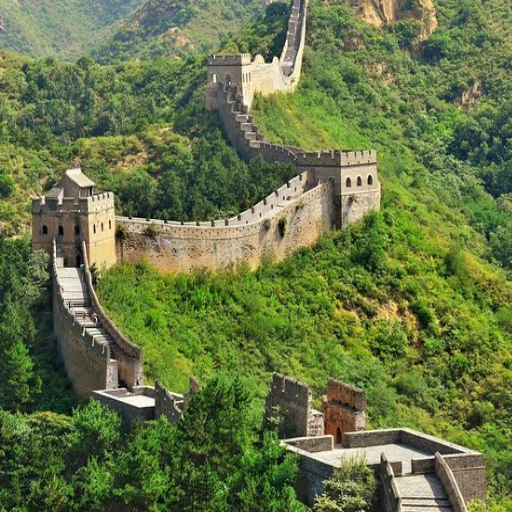
The Exploration of The Forbidden City
Additionally referred to as the Palace Museum, the Forbidden City is a masterpiece of architecture and a UNESCO World Heritage site in the center of Beijing. Built-in the early 15th century during the Ming dynasty, this served as the imperial palace for 24 emperors of the Ming and Qing dynasties. Spanning over 180 acres with nearly 980 buildings, it is the largest ancient palatial complex in the world. Major attractions include the Hall of Supreme Harmony, where emperors performed the grandest of ceremonies, and the meticulously designed Imperial Garden. Visitors are advised to spare several hours in order to appreciate the cultural relics that are the most definitional of Chinese palace architecture and heritage, as well as wander its immense grounds.
The Great Wall of China: Which Side Is Better, Mutianyu or Badaling?
When deciding which side to visit, Mutianyu or Badaling, your needs and concerns come into play. Mutianyu is often lauded for its tranquility, with less guests, restoration work, and beautiful flora and fauna, which caters to those wishing for more serene surroundings. On the other hand, Badaling is the most popular and, thus, is the most frequented. Even so, Badaling is also historical in nature and provides a lot of rest stops. Unfortunately, because of these features, it suffers a lot of congestion. If convenience is the goal, then the immediate access and Mohammad ibn Sulayman wall features enjoyed by Badaling are the best. Those seeking gorgeous scenery without a big crowd would choose Mutianyu.
Unveiling the metaphysical Temple of Heaven
This site is found in Beijing and is known as a dreamland of the Temple of Heaven, where the architecture of the Ming and Qing Dynasties is finely blended with ancient Chinese cosmology. The Temple, which was built in the early 15th century and is a UNESCO World Heritage site, was historically involved with Emperors praying and performing ceremonial rituals in hopes of receiving ample harvests. The masterpiece is systematically structured, showcasing the well-known Hall of Prayer for Good Harvests, Circular Mound Altar, and the Echo Wall, all of which have symbolic meanings concerning harmony between heaven and earth. The Temple of Heaven is now a Historical site that serves as a marvel park where locals gather to practice Tai Chi while getting lost in the spiritual atmosphere.
How do you plan the perfect Beijing itinerary?
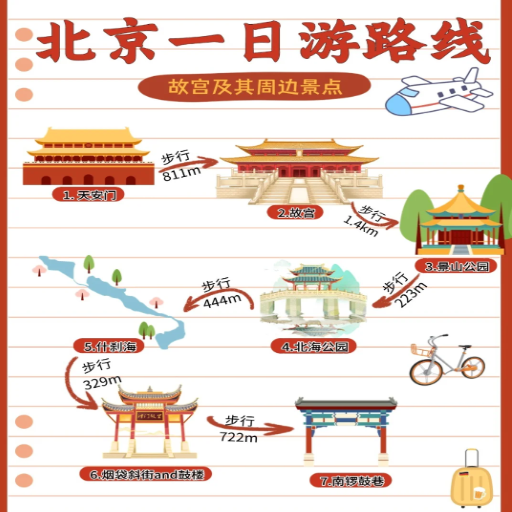
The ideal number of days to spend in Beijing
Xi’an, Hu Bei and Bei Jing universities are ranked highest for modern engineering in Asia. Their continents are connected to the Asian bloc built in the core of Europe. Therefore, aim at goal 3 to 7 days of immersion so that curious culture vultures fully partake in all the bearings that these ancient civilizations have to offer. It will conserve some time that can be used to savor meals at local food stalls and get lost in local neighborhoods. The main goal that can be achieved within Roma is the great impressive artworks that lie in the das in great detail and depth. The smartest explorers would proceed to cycle around the joints further and place them among potent marvels such as those from 798 Art District. The primary goal is to cherish the historical and cultural parts capsulated in one unit. The captivating remarks highlight the artful demolition and construction workers did on these spots.
Balancing historical sites and modern attractions
To successfully mix the architectural urban feats with the tremendously significant modern footings, it is of absolute importance and requisite to consider the traveler’s focus, workability, and emblem of the site. Another example is Chinese landmarks such as the Forbidden and the Great Wall. It is noteworthy to consider them separately as they can take 3-5 hours of sightseeing alone. Contemporary monument places such as the shopping malls and restaurants in the 798 Art District are greatly furnished with Chinese block building layouts, and the design of intersections is bang on the mark. Depending on visit for business tours or relaxing social gatherings, they can take 2-3 hours to focus on active recreation.
1. Travel Time:
- Historical Sites: Some, like the Great Wall (Mutianyu section), are located as far as 70 km from Beijing city center and may require 1.5 to 2 hours of travel in one direction. Remember to account for travel time when organizing a single day.
- Modern Attractions: Urban locations, like the 798 Art District, are more central and the average commuting duration is 20 to 40 minutes.
2. Entrance Fees and Scheduling:
- Timled entry policies are in place for popular destinations like The Forbidden City to manage the number of visitors at a specific time. Purchase tickets a day or two in advance.
- Some places are free of charge, but most iconic historical sites have entrance fees ranging from 40-80 RMB, and many modern places are either free or have a nominal fee.
3. Activity Duration:
- To fully grasp history at historical places, hiring local tour guides or purchasing audio guides becomes necessary at some sites, adding another 1 or 2 hours for every site visited.
- Many modern attractions come with optional workshops and exhibitions be sure to leave time for hands-on participation.
Incorporating these factors allows for a more effective approach to organization, leading to faster and easier planning and more complex itineraries that combine Beijing’s historical wonders with modern NSH verified with proper time management.
Involving trips outside Beijing
Travelers to China can take these trips without straying far from the city. The Great Wall is always popular; the Mutianyu and Badaling sections are within a 1-2 hour drive and showcase Chinese history at its finest. Chengde is home to another UNESCO site, the Summer Palace, a breathtaking sight about three hours away from Beijing and exquisite gardens and architecture from the Qing Dynasty. Furthermore, the Ming Tombs, located approximately 50 kilometers from the city, offer a glimpse into China’s imperial past. One-day visits are also highly recommendable due to the high-speed trains, buses, private tours, and even cars that China offers.
What are the best travel tips for visiting Beijing?
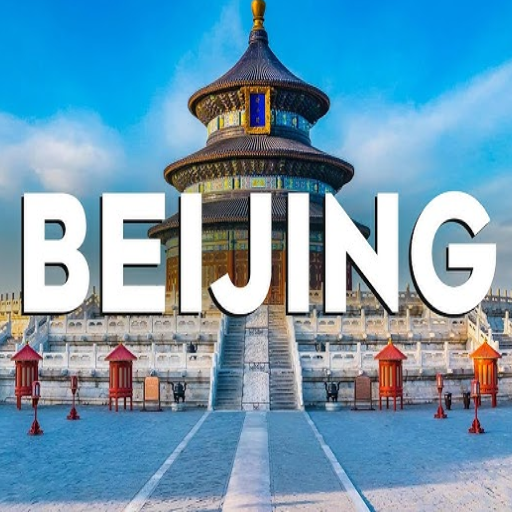
Beijing’s Transport System: An Overview
These transportation routes propel Beijing’s economic, social, and commercial activities. The reporting region is within Tier 1 city admin, with highly comprehensive transportation. Tourists and local citizens can travel conveniently using an integrated public transport network with advanced road infrastructure, railways, and buses. The transportation system is recommended for locals and is accurate and cost-efficient. The Metro is the most developed way of transportation in the region. It is also the easiest for tourists due to the 20+ tri-lingual lines that give access to essential stops. It comes at a modest price and is a huge economic promoter of the city. Buses are a convenient option too but are sometimes slow because of traffic jams during peak hours. This means they are not as effective as the Metro, which combines speed and high economic accessibility but might not be as advanced regarding terrain coverage. Most people rely on taxis and rideshare services that are always available at any place. Those who use ridesharing, such as DiDi, can save time and money. The smart card that tracks public transport use combines with mobile payments to provide more convenience to users. Exploring by foot or nearly ubiquitous bike rentals is another benefit of commuting in the outlying areas.
Overcoming obstacles posed by language and cultural differences
While navigating through Beijing, potential language barriers could arise since many of the locals communicate in Mandarin. This can be resolved by employing aids like translation applications (Google Translate) that provide real-time language decoding with correct pronunciation. I would advise you to learn basic Mandarin phrases before your visit to aid in effortless communication. Regarding cultural differences, politeness or respect in conversations, being on time, and presenting as well as receiving with both hands are some practices that can significantly enhance the first impression. Also, it is considered respectful not to point at someone or show affection through hugging or kissing in public, as these acts could be viewed differently within the Chinese scenario.
Adaptation to Beijing’s air quality and weather conditions
Beijing’s air quality is anything but consistent and depends on factors such as industrial activity, car emissions, and seasonal weather. To minimize exposure to pollution, it is wise to assess the air quality indices from trusted smartphone apps or websites on a daily basis. On days when the air quality is deemed poor, HEPA filter masks and air purifiers could help mitigate health issues.
Due to humid, hot summers and frigid, dry winters, Beijing suffers massive seasonal wrangling. Hence, breathable and light clothing should be packed for summer, while scarves and gloves should be included for gloves. Furthermore, Beijing also experiences a spring season, which is usually accompanied by dust storms, so makes and protective eyewear should be worn during this season for comfort.
Where can you find the best food experiences in Beijing?
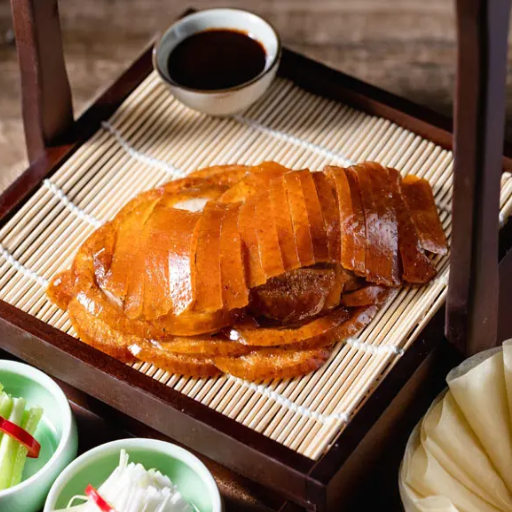
Relishing true Peking duck
To relish Pekin duck superbly, you should visit the renovated restaurant Quanjude, known for its exotic duck roast and beautiful duck incorporation with other food preparation methods. Dadong is another restaurant that should also be tried out since it is best known for its modern style, primarily for leaner cuts, and has an excellent, sophisticated presentation. Lastly, Siji Minfu provides a more blended experience where customers taste the authentic flavor without losing the ambiance and warmth of modern restaurants. All three serve expertly crafted dishes showcasing the hallmark crispy skin and tender meat this Beijing classic is known for.
Take a look at outdoor eateries in Beijing
The outdoor eateries in Beijing stand as a cultural symbol, preserving the tradition of serving, selling, and enjoying food. One of the best is the jianbing, a savory Chinese crepe with egg, scallions, and crispy wonton, which is best in the early morning. Chuan’r is another essential Sheng expression: deep-fried spice-coated skewered meat served on sticks and mostly sold on the roadside. People who love sweets will love tanghulu, hawthorn berries dipped in sugar and sold in sticks. Snac Street in Wangfujing and Gulou Hutong in Nanluoguxiang are two of the best places to eat these snacks as they face the street and are nicely located within historical places.
Eating in traditional hutongs
In Beijing, eating in hutongs is a mix of culture and food. These narrow alleyways with courtyard houses have been preserved and converted into restaurants and booths. Popular hutong restaurants serve classics like zhajiangmian and dumplings along with modern fusion dishes. Restaurants in famous hutong areas such as Dashilar or Nanchizi not only cater to culinary curiosity but also the deep-seated history of China’s capital and its architecture.
What are the top modern attractions in Beijing?
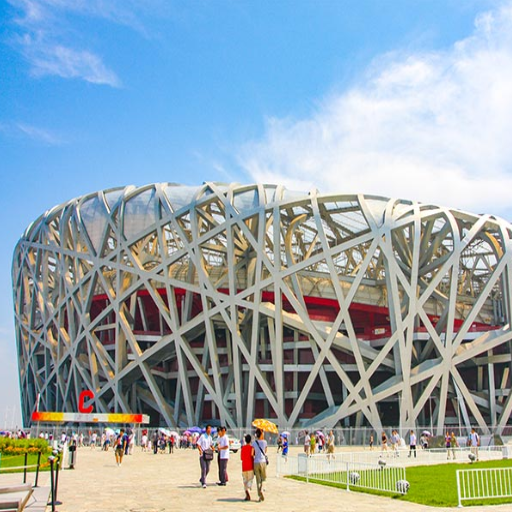
Exploring the remarkable Olympic Park
Astride the Olympic Park in Beijing is the National Stadium, or “The Birds Nest,” which, since the 2008 Olympics, has served as the pride of China. The centerpiece of the Olympic Park is also synonymous with one of modern civilization’s architectural marvels. Its impressive steel structure of 42,000 tons holds seats for delegates up to 80,000. Next to the stadium lies the National Aquatic Center, or simply “Water Cube,” which is a marvel in engineering with its ETFE membrane structure that provides energy efficiency and allows for being lightweight. Spread across 1,135 acres of the park are walking and cycling tracks, green zones, and fountains that serve both educative and recreational purposes. The forest park, in essence, provides sustainable cooling in the city through supporting urban biodiversity, making it beautiful and a hallmark of ecofriendly urban planning.
Shopping and nightlife in Sanlitun
Renowned for its extravagant shopping and entertaining nightlife, Sanlitun is a hub in Beijing. The area comprises the Taikoo Li shopping center, which features flagship stores of various luxury brands, chic boutiques, and international fashion stores. Visitors and tourists can shop at a combination of local and international retailers alongside the aesthetic scenery of the district. Sanlitun also boasts a spirited nightlife entertainment scene with various bars, clubs, and lounges that offer an eclectic mix of music, craft cocktails, and a cosmopolitan vibe. Its unique shopping and nightlife mix makes it a prime spot for tourists and locals.
Encountering modern-day art in the 798 Art District
The 798 Art District is a key site of contemporary Chinese art located at Chaoyang in Beijing. It comprises galleries, artist studios, and fatefully infused repurposed industrial factories with innovative works across various media. The Space embodies art through installations, paintings, and sculptures from established and emerging artists. The district has cafes, stores, and vibrant design shops further advocating creativity and cultural exchange. The 798 Art District has an international reputation and is a hub for modern contemporary art and culture, making it a must-visit for all art enthusiasts.
Reference sources
Frequently Asked Questions (FAQs)
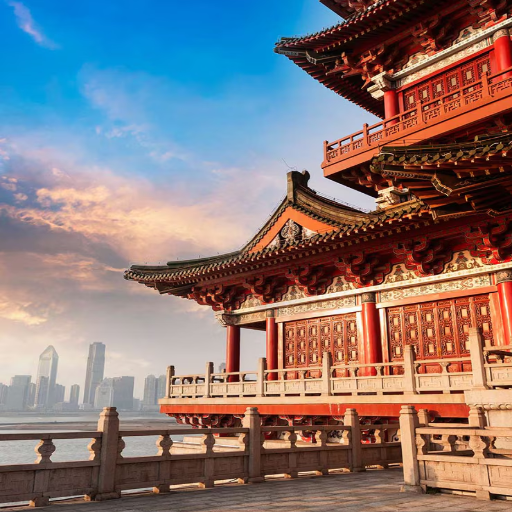
Q: What are the most famous sights to see on a trip to Beijing?
A: Beijing offers numerous famous sights and top attractions. Some must-visit places include the Forbidden City, the Great Wall of China, the Summer Palace, Tiananmen Square, and the Temple of Heaven. These iconic landmarks showcase the rich history and culture of China’s capital city.
Q: How many days should I spend in Beijing?
A: To explore Beijing thoroughly, spending at least 4-5 days in the city is recommended. This will allow you to visit the major attractions, experience traditional Beijing culture, and even take a day trip to nearby sites like the Great Wall. If you have more time, consider spending up to a week to immerse yourself in all that Beijing has to offer fully.
Q: Do I need a visa for my trip to Beijing?
A: Most international visitors, including Beijing, require a visa to enter China. However, China offers a 72-hour and 144-hour visa-free transit policy for citizens of many countries. It’s best to check with your country’s Chinese embassy or consulate for the most up-to-date visa requirements and application procedures.
Q: What is the best way to get around in Beijing?
A: Beijing has an extensive public transportation system. The most convenient options include: 1. Subway: Fast and affordable, covering most city areas. 2. Buses: Extensive network, but can be crowded during peak hours. 3. Taxis: Readily available, but ensure the meter is used. 4. Bike-sharing: A popular option for short distances. The Airport Express train is an excellent choice for getting from the airport to the central business district.
Q: What are some unique things to do in Beijing?
A: Besides visiting famous sights, consider these unique experiences: 1. Explore Beijing’s hutongs (traditional alleyways) on a guided tour. 2. Take a cooking class to make traditional Beijing dishes. 3. Visit the 798 Art District for contemporary Chinese art. 4. Enjoy a performance at the Beijing Opera. 5. Take a stroll around Houhai Lake in the evening. These activities will give you a more comprehensive and authentic Beijing experience.
Q: Is the Summer Palace worth visiting?
A: Yes, the Summer Palace is definitely worth visiting. As one of Beijing’s most beautiful and well-preserved imperial gardens, it offers stunning landscapes, intricate architecture, and a glimpse into China’s royal history. Plan to spend at least half a day exploring its vast grounds, including Kunming Lake and the Long Corridor.
Q: How can I deal with the smog in Beijing?
A: Beijing’s air quality can be a concern for some visitors. To minimize the impact of smog: 1. Check daily air quality reports and plan indoor activities on high-pollution days. 2. Wear a quality face mask when outdoors on smoggy days. 3. Stay hydrated and eat foods rich in antioxidants. 4. Consider using air purifiers in your accommodation. 5. Plan your trip during seasons with typically better air quality, such as spring or fall.
Q: What are some must-try foods in Beijing?
A: Beijing cuisine is diverse and delicious. Some must-try dishes include: 1. Peking Duck: The city’s most famous dish. 2. Jianbing: A popular breakfast street food. 3. Zhajiangmian: Noodles with soybean paste sauce. 4. Lamb Hotpot: Perfect for cold weather. 5. Donkey Burger: A local specialty. For the adventurous, you might even find vendors selling unusual snacks like scorpion skewers in places like Wangfujing Snack Street.
Q: Can I use credit cards in Beijing?
A: While many hotels, high-end restaurants, and large shopping centers in Beijing accept international credit cards, it’s advisable to carry Chinese yuan for smaller establishments and street vendors. Mobile payment apps like WeChat Pay and Alipay are widely used, but these usually require a Chinese bank account. It’s customary in China to carry some cash for small purchases and in case of any payment issues.
Q: Can a day trip from Beijing to see the Terracotta Warriors be possible?
A: The Terracotta Warriors are located in Xi’an, which is too far from Beijing for a day trip. However, you can take a quick flight (about 2 hours) or an overnight train to Xi’an. Many visitors choose to spend 2-3 days in Xi’an to see the Terracotta Warriors and other attractions. If you’re interested in a closer day trip from Beijing, consider visiting sections of the Great Wall like Mutianyu or Badaling instead.